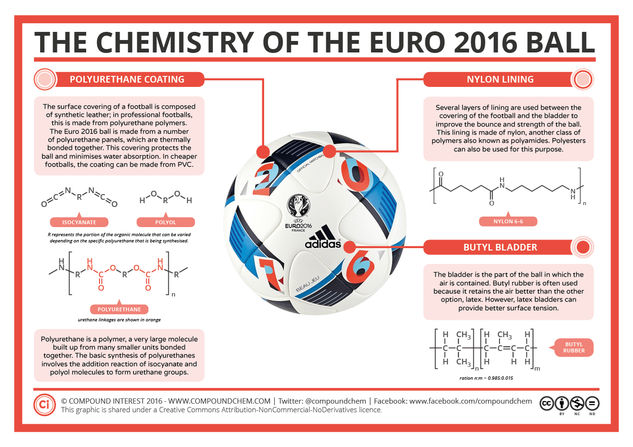© Compound InterestThe Chemistry of the EURO 2016 Football
This year’s European Championships are now well under way in France, and there’s already been some great football on show. It might surprise you to learn that some chemistry has also been taking centre-stage! The EURO 2016 ball is a triumph of materials science, and in this post we take a look at some of the chemicals that make it up.
A number of chemical materials are used in the manufacture of the EURO 2016 football. The majority of these materials are polymers; these are very long molecules built up from many smaller component molecules. A simple, everyday example is polyethene, used to make some plastic bags. Different classes of polymers are used to achieve particular properties for the ball.






